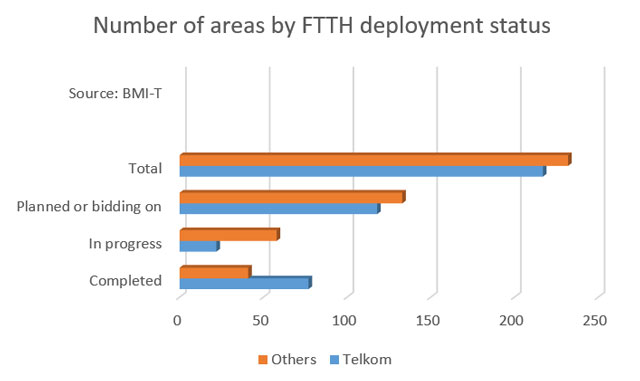
South Africa is likely to have more than 360 000 active fibre-to-the-home (FTTH) connections by 2019, new research has found.
According to BMI-TechKnowledge, which has published a new report entitled “The Fibre Land Grab: the Status of FTTx in South Africa”, open-access models have incentivised Internet service providers to offer attractively priced broadband services over newly deployed fibre infrastructure, helping propel demand from end users.
Telkom’s launch of its new and separate wholesale services arm, Openserve, which offers “aggressive new wholesale FTTH pricing”, fits in with this trend, BMI-T said.
FTTH deployments have shifted out of gated estates, where the main focus was prior to 2015, and into the suburbs.
Until recently, gated estates had seen a higher rate of FTTH deployment and service uptake, but without achieving a significant presence in the broadband market overall, said report co-author and BMI-T research director Brian Neilson in a statement.
“Across South Africa, there are also far more houses in suburbs (15m) than in estates (420 000), although estates in general have an obvious economic attraction of higher uptake and lower per-unit cost.”

According to BMI-T, Vodacom has been by far the most aggressive in terms of the number of estates deployed or deploying, but Smart Village (recently acquired by MTN) has two very large estates, giving it a significant market share of both “houses passed” and active subscriptions.
BMI-T found that seven companies made up the majority of FTTH deployments, while Telkom is set to lead the race. “Telkom’s aggressive rollout plans are clear from the analysis of areas completed vs planned or in progress. After completion of the rollouts, Telkom appears to catch up, with a similar number of areas (217) to that of all other players combined (232).”
The majority of the fibre deployments completed and underway use GPON and trenched fibre technologies. Active Ethernet and aerial fibre are the lesser trend, the report found. “For most of the players, funding rather than consumer demand is the primary constraint.” — © 2015 NewsCentral Media




